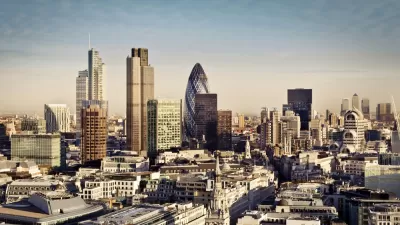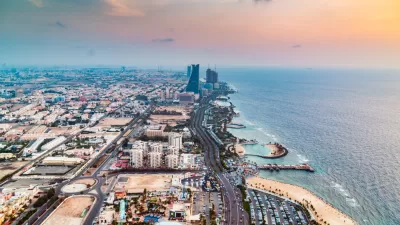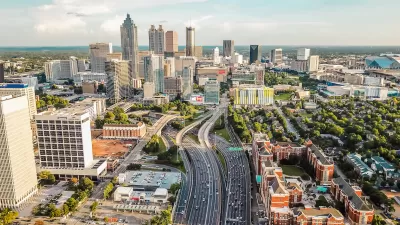An article by Steven Snell summarizes the drawbacks of building vertical cities.

"Taller we continue to build, and in greater numbers, but it’s no longer about getting closer to heaven, at least not in the literal sense," writes Snell. "There are many reasons why: a symbolic gesture of power and cultural influence; a city’s emergence on the 'global stage'; a stable investment opportunity for international finance portfolios; an efficient use of land. Whatever the reason, however, erecting tall buildings, or more totally, tall cities, has numerous negative ramifications."
Some of the negative consequences of tall buildings, as cited by Snell in the article, include the isolating effects of high-rise residential buildings, the heat island effects induced by tall buildings, shadows andloss of natural light, the negative impacts of many tall buildings on the walkability of the street below, and the danger tall buildings present to birds. We're sure there are more, as well.
Once we acknowledge that tall buildings have drawbacks, can we imagine and build a city that finds the right balance between the built and natural environments: "Taken en masse, if we recognize the negative impacts of a collection of tall buildings, we might begin to ask questions seeking an alternative type of city. One that isn’t tall. One that isn’t of parking lots and big box stores and sprawling communities either. Just one that uses land wisely, however complex enacting that principle can be."
FULL STORY: Should we stop building tall cities?

Planetizen Federal Action Tracker
A weekly monitor of how Trump’s orders and actions are impacting planners and planning in America.

Maui's Vacation Rental Debate Turns Ugly
Verbal attacks, misinformation campaigns and fistfights plague a high-stakes debate to convert thousands of vacation rentals into long-term housing.

San Francisco Suspends Traffic Calming Amidst Record Deaths
Citing “a challenging fiscal landscape,” the city will cease the program on the heels of 42 traffic deaths, including 24 pedestrians.

Amtrak Rolls Out New Orleans to Alabama “Mardi Gras” Train
The new service will operate morning and evening departures between Mobile and New Orleans.

The Subversive Car-Free Guide to Trump's Great American Road Trip
Car-free ways to access Chicagoland’s best tourist attractions.

San Antonio and Austin are Fusing Into one Massive Megaregion
The region spanning the two central Texas cities is growing fast, posing challenges for local infrastructure and water supplies.
Urban Design for Planners 1: Software Tools
This six-course series explores essential urban design concepts using open source software and equips planners with the tools they need to participate fully in the urban design process.
Planning for Universal Design
Learn the tools for implementing Universal Design in planning regulations.
Heyer Gruel & Associates PA
JM Goldson LLC
Custer County Colorado
City of Camden Redevelopment Agency
City of Astoria
Transportation Research & Education Center (TREC) at Portland State University
Jefferson Parish Government
Camden Redevelopment Agency
City of Claremont





























